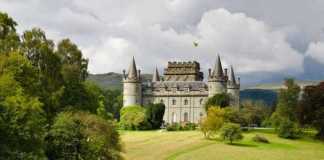Are you searching for the best things to do in winter in South Korea? Korea’s winter is between November and March, but the temperatures begin to really drop at the end of December through to February. Most visitors to South Korea will want to check out the capital city Seoul, which is in northwest South Korea and where during the coldest month (January) temperatures are an average of -2.4 °C (27 °F). Other parts of South Korea get even colder in winter with records of -15 °C (5°F) and even -20 °C(-4°F).
Although temperatures are cold it shouldn’t deter you from visiting, as there are so many incredible things to see and do here in winter. The cold season in South Korea certainly isn’t all doom., gloom, and teeth chattering. From Christmas markets to snow festivals and snow-covered national parks, start planning your next trip to South Korea in winter with these things to do.
Contents
- Winter in Korea
- 5 Things to Do in Winter in Seoul
- Things to Do in Winter in Other Parts of South Korea
- 6- Photograph The Colourful Houses At Gamcheon Culture Village
- 7- Feel Festive At The Busan Christmas Tree Festival
- 8- Visit The Hwacheon Sancheoneo Ice Festival
- 9- Hit The Slopes At Yongpyong Resort
- 10- Have Fun In The Snow At Taebaeksan Snow Festival
- 11- Boseong Tea Plantation Light Festival
- 12- Get Lost In The Juknokwon (Bamboo Forest)
- 13- Enjoy The Views At Deogyusan National Park
- 14- Gaze At The Snow-Capped Rooftops Of Jeonju-Si
- 15- Relax At A Korean Spa
- 16- Wondae-Ri Birch Forest
- 17- Go Strawberry Picking
- 18- Taste Fragrant Tea’s At A Traditional Tea House
- 19- Photograph Tthe Snow-Covered Volcanic Cones On Jeju Island
- 20- Admire The Winter Wonderland That Is Seoraksan National Park
Winter in Korea
5 Things to Do in Winter in Seoul
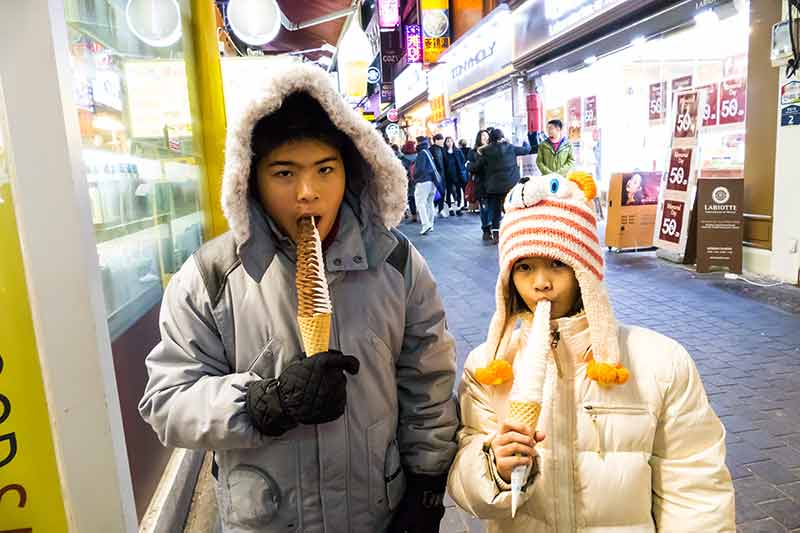
1- Wander The Streets Of Bukchon Hanok Village
Bukchon Hanok Village is a residential neighbourhood in the Jongno District of northern Seoul.
The village dates to the 14th century and is home to more than 900 traditional Korean Hanok houses.
The architectures of these houses were popular in the Joseon Dynasty, when members of the royal family used to live in Bukchon.
It is best to walk around Bukchon at your own pace, exploring every nook, alley, and street in your own time.
It’s a hilly neighbourhood so make sure you are wearing boots with lots of grip as it may be snowy or icy in winter.
Pop into the local restaurants, tea houses or cultural centres to learn more about Korean culture and for some reprieve from the cold.
Bukchon Hanok Village is at Gyedong-gil, Jongno-gu, Seoul.
2- Hike Around Bukhansan National Park
Bukhansan National Park is just north of Seoul.
No matter the season it is an excellent place to go hiking and take in the views of the city in the distance.
There are a variety of trails for varying abilities so it’s good for the whole family.
One of the best things about this national park is its easily accessed from the city.
There are multiple entrances to the park, and they can all be accessed via the subway or bus from Seoul.
The most popular trail in the park is Baegundae Peak, which is 4.9 miles (8 km) return and can take anywhere between four and six hours to complete.
The views along the way are the perfect blend of urban and rural, with high rises sprouting up among the mountains.
Bukhansan National Park is at 262 Bogungmun-ro, Seongbuk-gu, Seoul.
3- Go Ice Skating In The City
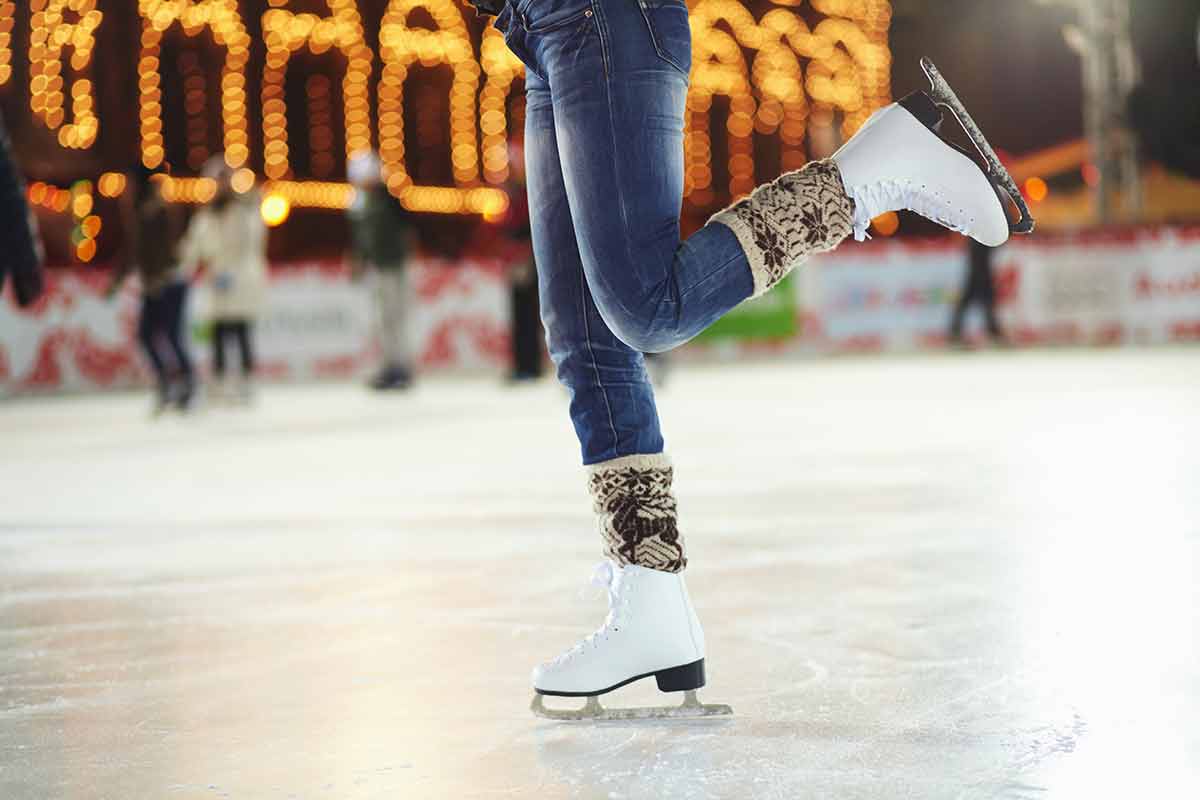
Ice skating is an iconic winter activity and there are plenty of places to do it in Seoul.
There’s nothing like a spot of ice skating to get you in the festive mood.
Banyan Tree Ice Rink is a high-end place within the five-star Banyan Tree hotel, so expect to pay the price for the experience.
There’s also CoEx Ice Rink which offers a different theme every year.
Visit around Christmas and the place will be covered in festive cheer.
If you are visiting with kids, then try the I’Park Mall skating rink on the 4th floor and it’s not very big so it’s ideal for children (and adults with little skating confidence).
4- Feel Festive At One Of Seoul’s Christmas Markets
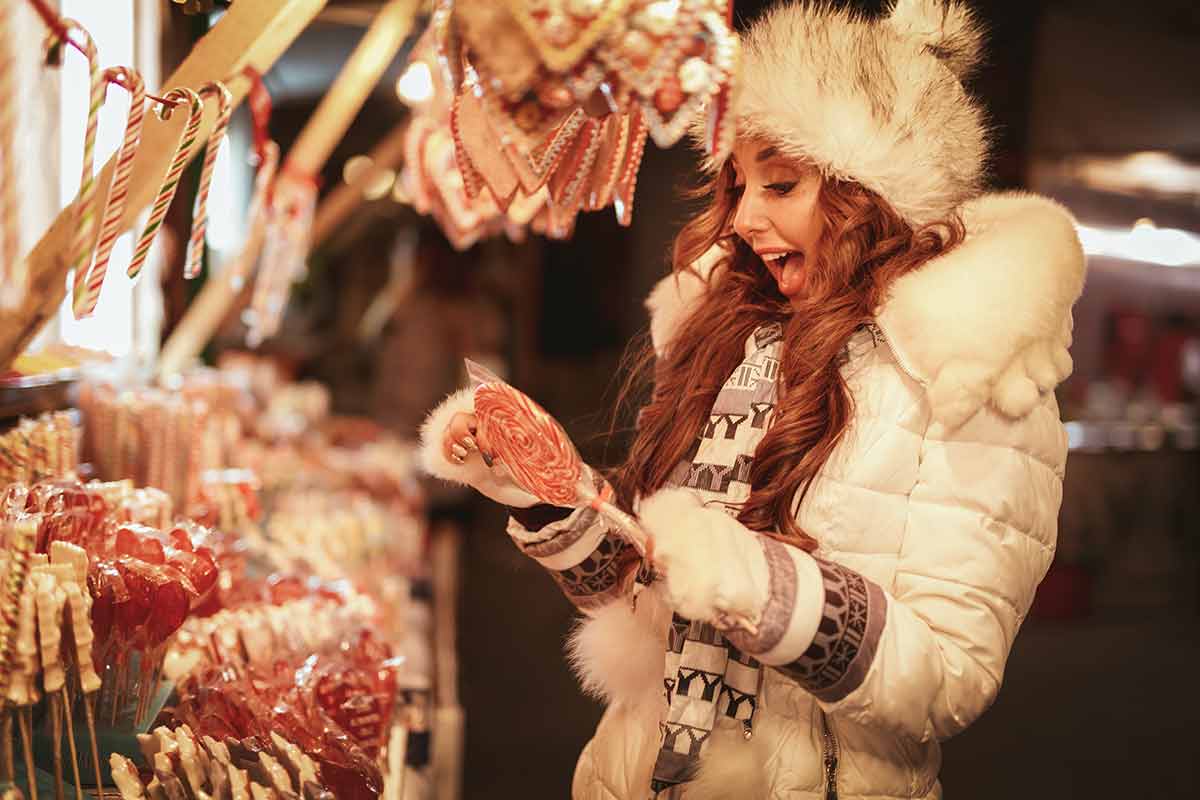
Seoul embraces the festive spirit as soon as December arrives and there are a few excellent places you can visit during the Christmas season.
Le Marche De Noel is a wonderful French Christmas market that is often at Seorae Maeul Park.
Tuck into Christmas food or purchase some souvenirs and Christmas gifts.
There’s also the European Christmas Market at Seoul Hansung University that runs in mid-December.
Here you can try an assortment of European Christmas dishes while admiring the decadent decorations.
The Seoul Christmas Market at Gwanghwamun Square hosts a lantern festival and is a lively place right in the city center to catch the festive cheer if you are spending Christmas away from home.
5- Appreciate Korean History At Gyeongbokgung Palace
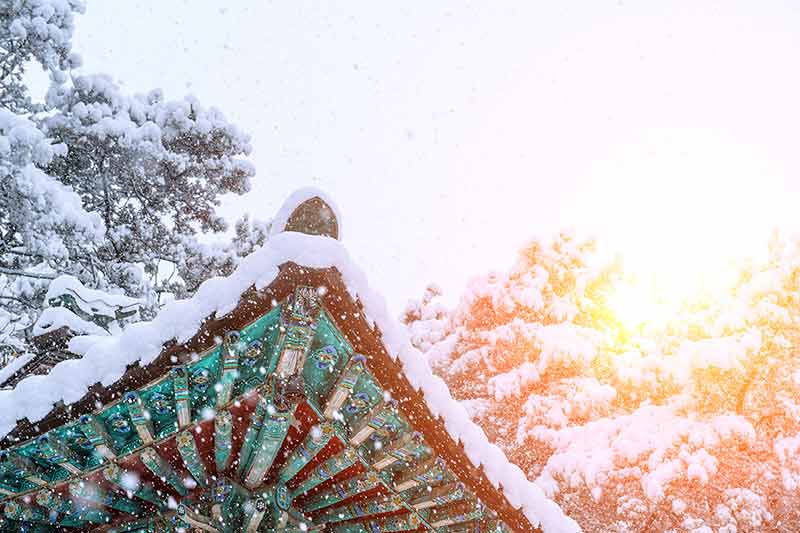
Gyeongbokgung Palace should be on your bucket list whether you visit Seoul in winter or during a different season.
It just so happens that Gyeongbokgung Palace is usually covered in a blanket of picturesque snow during winter.
This palace is the main royal palace of the Joseon Dynasty.
It was built in 1395 and is often referred to as the Northern Palace because of its northern location in comparison to Seoul’s other palaces.
It’s well worth visiting Gyeongbokgung Palace to appreciate Korean architecture and learn more about local culture and history.
Gyeongbokgung Palace is at 161 Sajik-ro, Jongno-gu, Seoul.
Recommended tours:
- Seoul: City Hightlights, Palace Tour and Optional Hanbok
- From Seoul: DMZ Half or Full-Day Guided Day Trip
- Seoul: Myeongdong Nanta Theater Show Ticket
Things to Do in Winter in Other Parts of South Korea
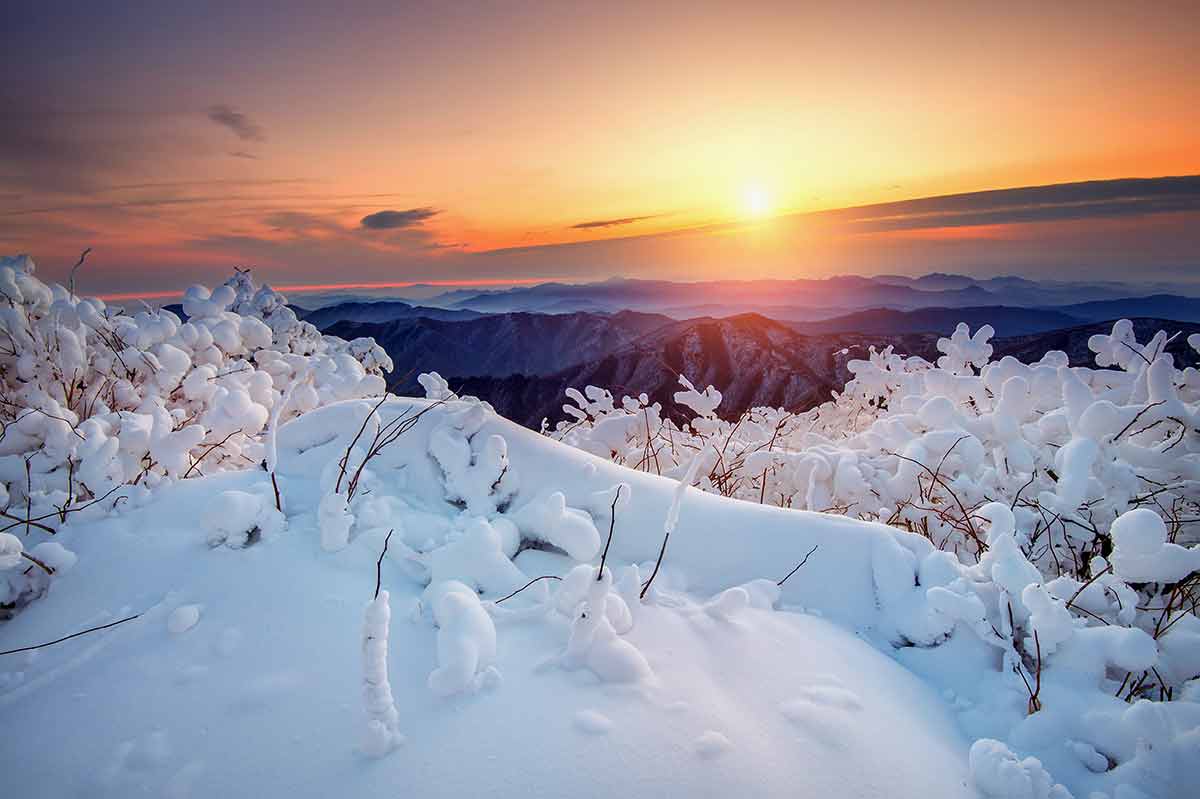
6- Photograph The Colourful Houses At Gamcheon Culture Village
See a photo of Gamcheon Culture Village and you wouldn’t be forgiven for thinking it was one of the favelas in Brazil!
Gamcheon Culture Village is in the southeast of South Korea outside of the city of Busan.
The village is formed by stilted houses that are built in a staircase-like fashion on the foothill of a mountain.
The village is called the “Machu Picchu of Busan”.
The houses themselves may be crammed together and small but they are vibrantly colourful.
Busan is well connected as it is one of the largest cities in the country.
If you are visiting from outside of Busan, take the KTX (South Korea’s high speed train system) or join a guided tour to the village.
From Busan you can also take the subway line 1 (orange line) and get out at exit 6 where you will need to take the Green Minibus 1-1 or the Green Minibus 2-2.
Gamcheon Culture Village is at 203 Gamnae 2-ro, Saha-gu, Busan.
7- Feel Festive At The Busan Christmas Tree Festival
The Gwangbok-ro part of Busan is transformed during the Christmas Tree Festival.
It is festively decorated with LED lights, illuminations, snowmen, reindeers and of course Christmas trees.
Visit the festival and there will be live music and an unparalleled buzz from the people getting in the cheerful mood.
You can even begin to forget about the winter cold.
8- Visit The Hwacheon Sancheoneo Ice Festival
South Korea hosts many festivals celebrating the winter season.
The Hwacheon Sancheoneo Ice Festival is one such event that takes place every year, usually from 6 January to the 28 January in Hwacheon-gun in Gangwon-do province in northern South Korea.
For a real local event to embrace the snowy and icy conditions of the province there’s nowhere better.
The festival’s main event is ice fishing on the frozen Hwacheoncheon Stream.
More than one million people have been estimated to visit the festival, showing its ever-growing popularity.
Try your hand at ice fishing or watch the locals do their thing.
In addition to ice fishing there is also the chance to go ice sledding, bobsledding and of course taste the freshly caught trout that’s grilled in front of you.
Hwacheon Sancheoneo Ice Festival is in South Korea, Gangwon-do, Hwacheon-gun, Hwacheon-eup, Jung-ri, 196.
9- Hit The Slopes At Yongpyong Resort
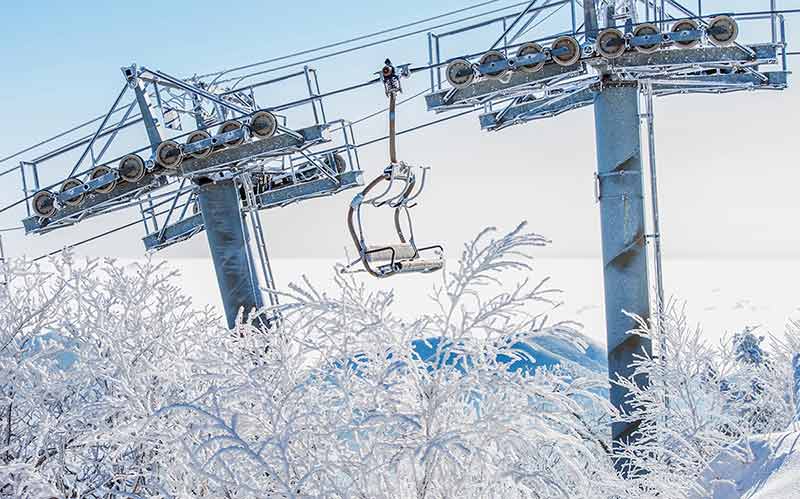
Yongpyong Ski Resort, also known by its English name Dragon Valley, is a ski resort in Pyeongchang Gangwon-do in northeast South Korea.
The ski resort in the Baekdudaegan Mountain Range receives around 250 cm of snowfall each season.
There are not just the slopes but also a swimming pool and a mighty 45-hole golf course.
The resort has hosted notable ski competitions like the World Cup Ski and the Asian Winter Games.
It’s one of the most popular ski resorts in the country and well-worth visiting no matter whether you are a beginner or an experienced skier or snowboarder.
Yongpyong Ski Resort is at 715 Olympic-ro, Daegwallyeong-myeon, Pyeongchang-gun, Gangwon-do.
Another ski resort to visit is the Elysian Gangchon Ski Resort for a winter fun day tour.
10- Have Fun In The Snow At Taebaeksan Snow Festival
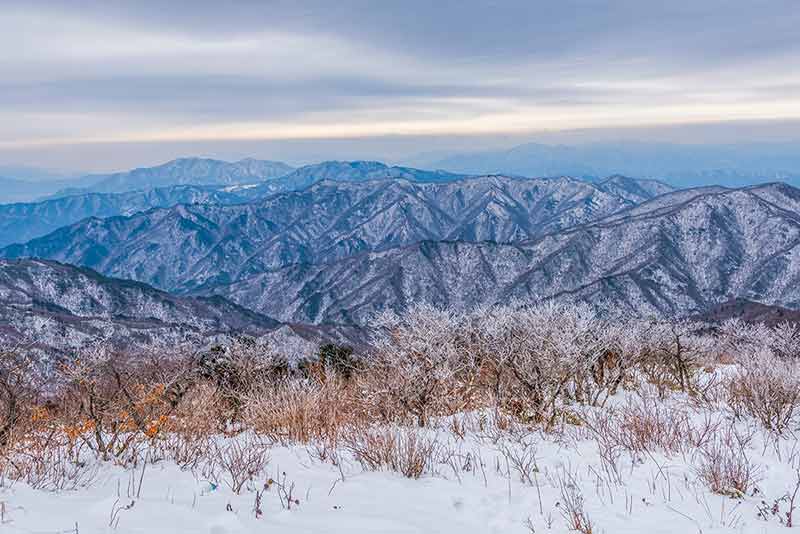
The Taebaeksan Snow Festival is in Gangwon-Do Province in eastern South Korea.
Set amidst the imposing Taebaeksan Mountain there’s plenty going on in this area in winter.
The festival hosts a variety of events like snow carving contests, to snow sculpture exhibits, igloo making, ice sledding, and skating.
The sculptures are mightily impressive and then suddenly you remember they are made from snow!
The sculptures come in all shapes, sizes, and forms, from cartoon characters to buildings and detailed people, it’s amazing.
It is also super cheap to enter the festival around $5.
Taebaeksan Snow Festival is at 162, Cheonjedan-gil, Taebaek-si, Gangwon-do, Republic of Korea Taebaeksan National Park.
For more winter wanderings, read:
11- Boseong Tea Plantation Light Festival
The Boseong Tea Plantation Light Festival started in 2000 and has attracted many visitors since its opening, growing more popular each year.
Decorative lights, illuminations and decorations make this a superb and glittering evening activity in South Korea.
The event is set in the tea plantation with the aim of promoting Boseong.
Before heading into the sea of lights, be sure to grab some delightful street food from the local vendors.
The Boseong Tea Plantation Light Festival is at 763-65 Nokcha-ro, Boseong-eup, Boseong-gun, Jeollanam-do.
12- Get Lost In The Juknokwon (Bamboo Forest)
Juknokwon Bamboo Forest is in Damyang-gun, which is the most famous bamboo forest in South Korea.
From Seoul, head to Juknokwon Bamboo Forest for a day trip.
Between November and February, the bamboo forest is open from 9am to 6pm.
While you are there you can breathe fresh air, enjoy the silence that the bamboo forest brings and wander around.
Remember in winter the temperatures will not only be low, but the shade of the bamboo will make it feel even colder.
Juknokwon is at 119 Jungnogwon-ro, Damyang-eup, Damyang-gun, Jeollanam-do.
13- Enjoy The Views At Deogyusan National Park
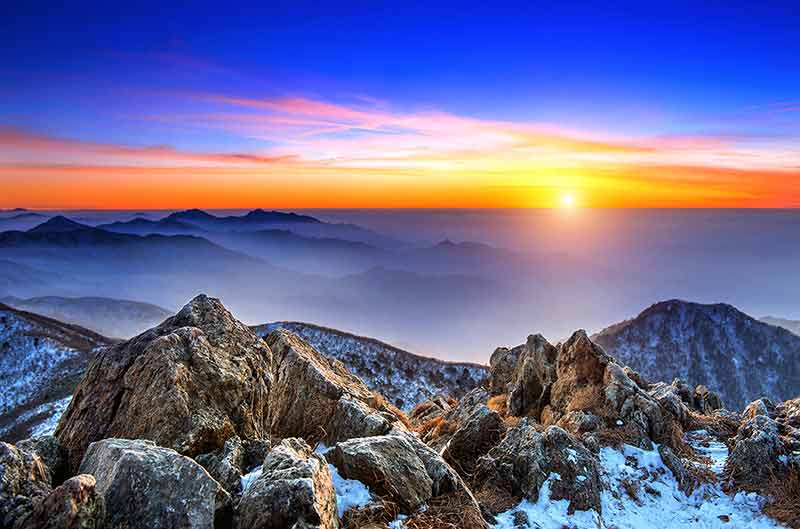
Nestled between the Deogyusan mountain range, this national park is well worth visiting any time of the year.
If you are visiting in winter however, a wonderful crispy blanket of snow usually covers the trees and mountain peaks.
Deogyusan Mountain is the 4th tallest mountain in South Korea with a summit of 1,614 metres (5295 ft).
The mountain and surrounding valley are dotted with ponds, waterfalls, and scenic vantage points.
There are also plenty of cultural and historical things to learn about while at the mountain.
Jeoksangsanseong Fortress and Hanging Painting of Anguksa Temple are just two of a few places you can visit.
Deogyusan National Park is at 159, Gucheondong 1-ro, Muju-gun, Jeollabuk-do, Anseong-myeon, Muju-gun.
14- Gaze At The Snow-Capped Rooftops Of Jeonju-Si
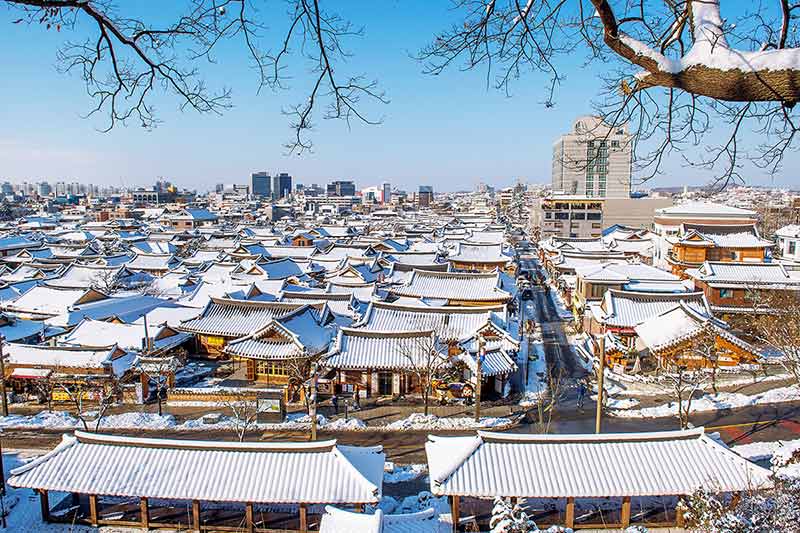
Jeonju-Si is a city in western South Korea where you can soak up Korean culture and history.
One of the most famous places to visit in the city is the Jeonju Hanok Heritage Village.
Jeonju has one of the largest collections of Hanok houses in South Korea.
You can’t help but feel endeared by the cobble streets and charming buildings.
Here you will find traditional curved roofed houses set in front of tree covered mountains.
When the snow comes, the already picturesque village is transformed into a winter wonderland.
While there you must try bibimbap which was founded in this city!
It’s a bowl of rice topped with vegetables and egg and it’s one of the best places to eat it in the country.
15- Relax At A Korean Spa
You will find traditional Korean spas in most cities in South Korea.
Also known as a Jjimjilbang, it’s a Korean sauna that’s set in a traditional bathhouse.
Opt for a variety of services from massages, to steam rooms, to saunas, nail care and even hair styling.
Usually, men and women are separated.
The spas are believed to provide a variety of health benefits including stress relief and improved circulations.
16- Wondae-Ri Birch Forest
From bamboo to birch, checking out the Wondae-Ri forest is an exciting winter activity.
Between 1974 and 1995 around 690,000 birch trees were planted over a 138-hectare space.
Head to the forest entrance then you can head out along the trails and explore.
The white birch trees contrast beautifully with the snowy grass.
Walking around the pathways can take around 60 to 80 minutes depending on your pace.
Wondae-Ri Birch Forest is at 581 Wondae-ri, Inje-eup, Inje-gun, Gangwon-do.
17- Go Strawberry Picking
Strawberries picking in winter? The strawberry season in Europe is usually between February and May.
But head to South Korea and the strawberry season runs all the way from December to June, peaking from January to April.
One of the best places to go strawberry picking is in Gyeonggi Province.
There’s the Saemmul Strawberry Farm in Namyangju, which is a great option if you are spending time in Seoul as you can easily do a day trip while taking a break from the city.
As well as strawberry picking there’s also a jam making experience.
18- Taste Fragrant Tea’s At A Traditional Tea House
Tea is synonymous with Asia and there are some excellent tea houses across the country, especially in Seoul.
There’s the Dawon Traditional Tea Garden inside the Kyung-in Museum and Shin Old Tea House in the busy Insadong district.
In fact, in Seoul there are tea houses along most streets and there’s nothing cosier than warming up in a traditional tea house in winter.
It’s the perfect authentic experience for anyone who loves tea!
19- Photograph Tthe Snow-Covered Volcanic Cones On Jeju Island
Jeju Island is South Korea’s largest island.
It was formed by a large underwater volcanic eruption 2 million years ago.
There are 360 oreums (defunct volcanic cones) across the island and while you cannot visit them all here are some of the top ones to see.
- Geum Oreum is in the west of the island, and it is beautiful at sunset.
- Yongnuni Oreum is named after its shape, which just loosely looks like a dragon lying down.
- Darangshi Oreum is another great spot, it stands at around 380 metres (1246 ft) and has excellent views of parts of Jeju Island.
You may also like this guided tour of Jeju Island.
20- Admire The Winter Wonderland That Is Seoraksan National Park
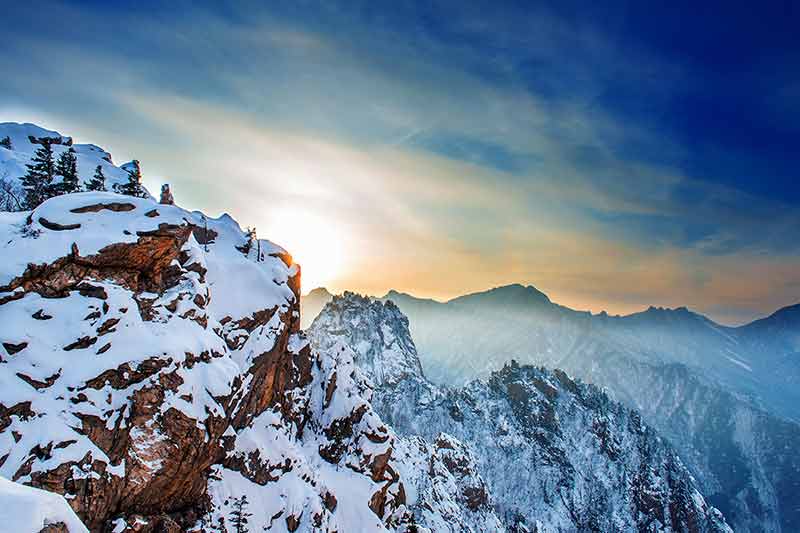
Seoraksa National Park surrounds Seoraksan Mountain and is one of the country’s most famous national parks.
It was the first designated national park in South Korea.
There are cultural sites like the Baekdamsa and Sinheungsa temples.
Sinheungsa is thought to be the oldest Seon temple in the world.
The park is also a UNESCO Biosphere Protection site and is home to various rare and endangered plants.
Keep your eyes peeled for the Korean musk deer and the Korean goral.
Seoraksan National Park is at Gangwon-do, Sokcho-si, Seoraksan-ro, 833 KR.
- 20 Famous Landmarks in South Korea
- 20 Things To Do In South Korea
- 20 Best Beaches In South Korea
- 35 Things To Do in Seoul
- 20 Seoul Day Trips
- 20 Things To Do In Jeju Island
- 10 Things To Do In Gyeongju
- Andong Mask Dance Festival
- Jirisan National Park
- Korean Temple Stay Experience
- Seoul At Night
- 20 South Korean Cities
- Winter In Korea – 20 Things To Do
- 20 Things To Do In Busan
Plan Your Trip

Rent A Car – Find the best car rental rates at Discover Cars. They compare car hire companies to provide you with the best deal right now.

Find A Hotel – If you’re curious about this article and are looking for somewhere to stay, take a look at these amazing hotels.
